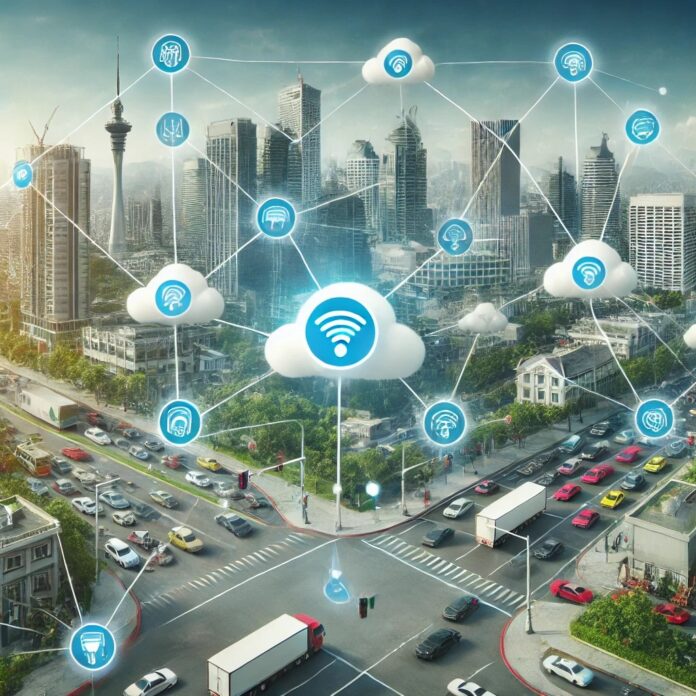Introduction to Edge Computing
Edge computing is rapidly gaining traction in the technology world. Unlike traditional cloud computing, which relies on centralized data centers, edge computing processes data closer to the source of data generation. This proximity allows faster data processing, reduced latency, and improved efficiency. As businesses and industries continue to generate massive amounts of data, edge computing is becoming an essential solution for managing and utilizing this information effectively.
The Evolution of Edge Computing
The Rise of IoT and Big Data
The Internet of Things (IoT) and the proliferation of big data have been major drivers of edge computing adoption. With billions of connected devices generating continuous data streams, traditional centralized computing systems struggle to keep up. Edge computing addresses this challenge by bringing computation and data storage closer to the devices themselves. This approach reduces the need for data to travel long distances, minimizing latency and enhancing real-time processing capabilities.
From Centralized to Decentralized Systems
In traditional computing models, data is collected at the edge of the network and sent to centralized data centers for processing. However, this method can lead to significant delays, especially in time-sensitive applications such as autonomous vehicles or industrial automation. Edge computing decentralizes this process, allowing data to be processed locally, closer to where it is generated. This shift not only improves response times but also reduces the burden on central servers, enhancing overall system performance.
Key Benefits of Edge Computing
Reduced Latency
One of the most significant advantages of edge computing is its ability to reduce latency. By processing data near the source, edge computing minimizes the time it takes for data to travel back and forth between devices and central servers. This is crucial for applications that require real-time decision-making, such as autonomous driving, healthcare monitoring, and financial trading.
Enhanced Security
Edge computing also offers improved security and privacy. Since data is processed locally, there is less need to transmit sensitive information over long distances. This reduces the risk of data breaches and unauthorized access. Additionally, edge devices can implement security measures tailored to specific applications, further enhancing data protection.
Scalability and Flexibility
Edge computing provides scalability and flexibility by distributing processing tasks across multiple devices. This decentralized approach allows businesses to scale their operations more efficiently and adapt to changing demands. Whether it’s a retail store handling increased customer data during peak hours or a smart city managing varying levels of sensor data, edge computing offers the flexibility needed to meet these challenges.
Use Cases of Edge Computing
Autonomous Vehicles
Autonomous vehicles rely heavily on real-time data processing to navigate safely and efficiently. computing enables these vehicles to process data from sensors and cameras on the spot, reducing latency and improving response times. This capability is essential for making split-second decisions in complex driving environments.
Industrial Automation
In industrial settings, computing plays a crucial role in automation and predictive maintenance. By analyzing data from machinery and equipment locally, edge devices can detect anomalies and predict potential failures before they occur. This proactive approach minimizes downtime, reduces maintenance costs, and enhances overall productivity.
Smart Cities
Smart cities leverage edge computing to manage and analyze data from various sources, including traffic lights, surveillance cameras, and environmental sensors. By processing this data locally, computing helps optimize urban infrastructure, improve traffic flow, enhance public safety, and reduce energy consumption.
Challenges and Future of Edge Computing
Integration and Interoperability

Despite its numerous benefits, computing faces challenges related to integration and interoperability. As more devices and systems become interconnected, ensuring seamless communication and data exchange between different platforms is crucial. Standardizing protocols and developing interoperable solutions will be essential for the widespread adoption of edge computing.
Edge and 5G: A Powerful Combination
The advent of 5G technology is set to revolutionize computing. With its high-speed, low-latency capabilities, 5G enhances the performance of computing applications. The combination of 5G and computing will unlock new possibilities in fields such as augmented reality, remote surgery, and smart manufacturing, further driving innovation and efficiency.
Conclusion
Edge computing is transforming the way data is processed and utilized, offering reduced latency, enhanced security, and greater scalability. As the world becomes increasingly connected, the demand for efficient and real-time data processing solutions will continue to grow. computing, combined with advancements like 5G, holds the potential to revolutionize various industries, making it a cornerstone of future technological development.



